January 1930 and I have just been asked by E. Leitz Optische Werke to review the latest version of their tiny marvel of technology, the Leica I Model A miniature camera. It is truly revolutionary. Because it uses 35mm cinematograph film you can feed enough stock into a little steel cassette to allow up to 36 pictures without having to stop and reload. It’s also very advanced, with automatic features such as a knob that advances the film by exactly one frame at a time and cocks the shutter simultaneously.
It is hard to imagine that it is just six years since Herr Leitz himself took the momentous decision to forge ahead with a miniature camera. After nearly ten years of discussion within the old-established optics company, he gave his support to the new venture in the summer of 1924: “I hereby decide: We will risk it.” Now, in 1930, miniature photography is all the rage and the Leica offers a winning formula.
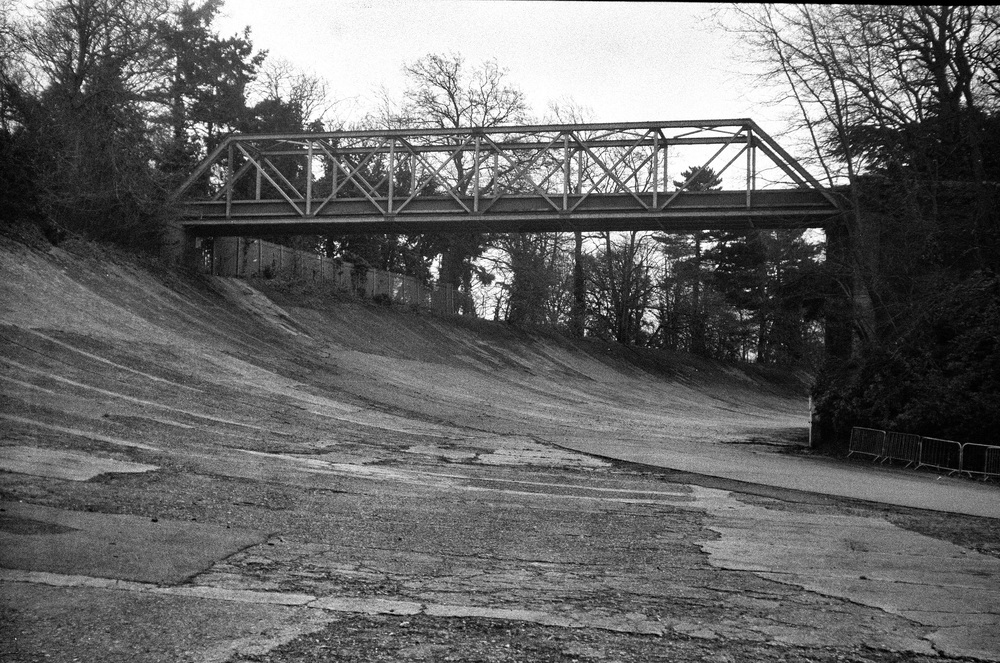
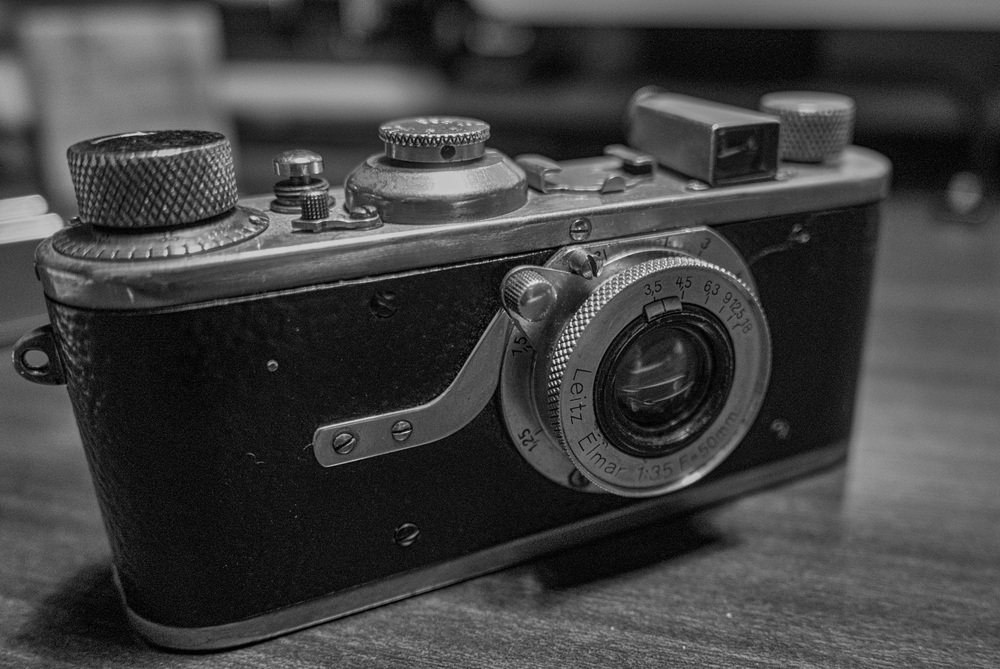
The Leica I is a high-quality mechanical instrument that will probably be functioning just as well into the next century, provided that cinematograph film is still available.
Designed by Herr Barnack and Herr Berek at the company’s factory in Wetzlar, Germany, this wonder of miniaturisation is a major advance in photography.
Quite apart from the ingenious film advance and shutter cocking mechanism, the Model A has a host of modern aids to good photography.
Minor miracle
The fast f/3.5 Elmar lens with its 50mm focal length is a minor miracle in itself, so small is it when retracted into the body. It is perfectly matched to the body, incidentally, and is fixed firmly in place so you do not have to fuss over different focal lengths. Yet progress never stops at Leitz. Already I hear rumours that a brand new version with interchangeable lenses could be announced later this year. I am told that the lenses will screw into the body so you can select an appropriate focal length or maximum aperture to meet every photographic challenge.
The Elmar lens of the Leica I extends for use simply by pulling out the front section and twisting it to the right to lock in place. This is important: If you fail to extend it fully your pictures will be out of focus. But at rest, with the lens retracted, the entire camera is small enough to fit in the pocket of a greatcoat, ready for instant action when the opportunity presents itself.
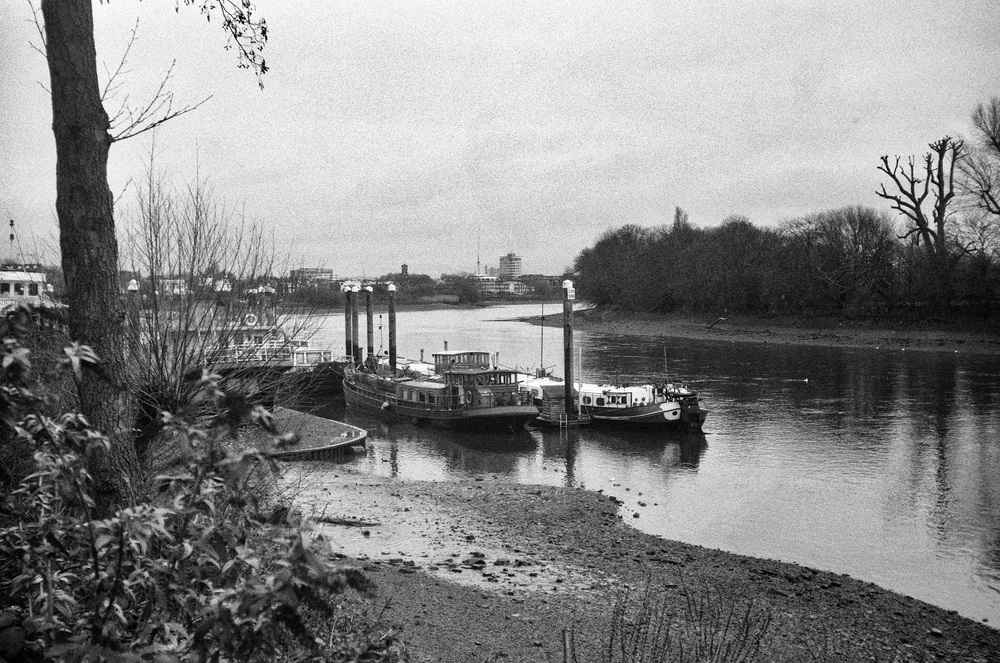
On the front of the Elmar lens is a handy adjustment slider to set the aperture, ranging from the fast f/3.5 through to f/18 for sunny days and maximum depth of field. It is very easy to hold the camera in the left hand and slide the aperture control with the nail of your right thumb. Not at all fiddly. Next to the camera body there is an “automatic” focusing device which is clearly marked from 1m to infinity. Wherever you point the guide line on the distance scale the lens is automatically focused to that range.
A tab, which aids focus movement, is normally locked at the infinity position (11 o’clock) thanks to an ingenious metal spring which some enthusiasts have taken to calling a “hockey stick.” I cannot imagine a better arrangement. Pressing in the sprung stick releases the focus tab and you can then accurately set the focus against the scale simply by viewing your subject and guessing the distance. What could be simpler?
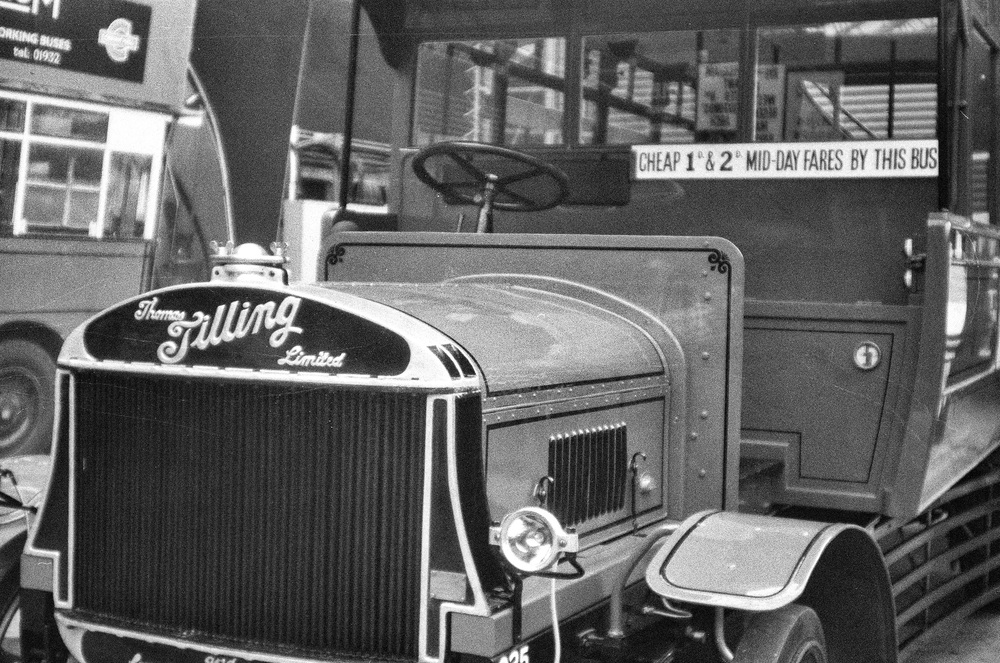
Shutter speed
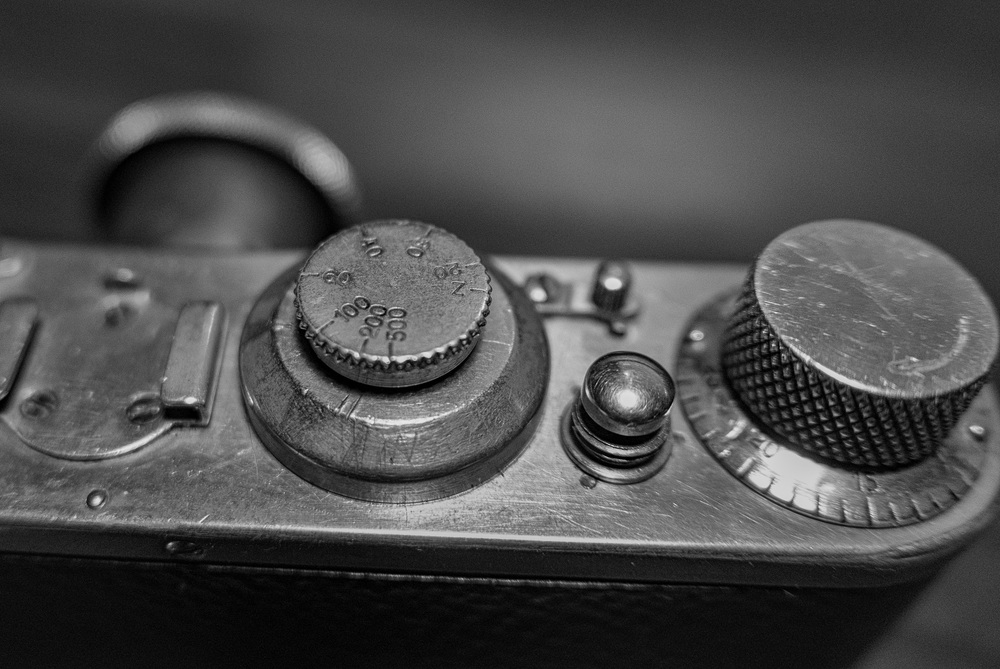
Of course, aperture and focus are only two of the three vital elements of a good picture. The third, and this is very important, is the shutter speed.
On the Leica I shutter speed is set by means of a dial mounted on a small podium fixed to the top plate. Here you can choose any shutter speed from a lightning fast 1/500s, through 1/200s, 1/100s, 1/60s, 1/40s, 1/30s, 1/20s down to Z when you have a bit of Zeit on your hands.
To calculate which of these settings you need, ideally in conjunction with the aperture you have already set, you need to decide on an exposure time. To do this you typically suck your right index finger and hold it up to the wind. I have become adept at this in the past week or so.
On the top plate, next to the shutter-speed dial, are a release lever to enable to film to be wound back into the cassette and a beautifully balanced shutter release button with a comfortable domed head. To the right of these controls is the exciting and revolutionary combined shutter cocking and film winding knob. This is helpfully inscribed with an arrow to show the right direction for advance.
Turning the knob clockwise winds on the film and cocks the shutter, thus eliminating any possibility of double exposure. Below this marvel lies a useful engraved scale which indicates how many frames you have left in your cassette. After loading a film you programme this computational device by moving the scale (using one or other of the two raised pimples) so that the zero lines up with an arrow inscribed in the top plate. This intelligent and pioneering system clicks along, frame by frame, so you always know exactly where you are. What will they think of next?
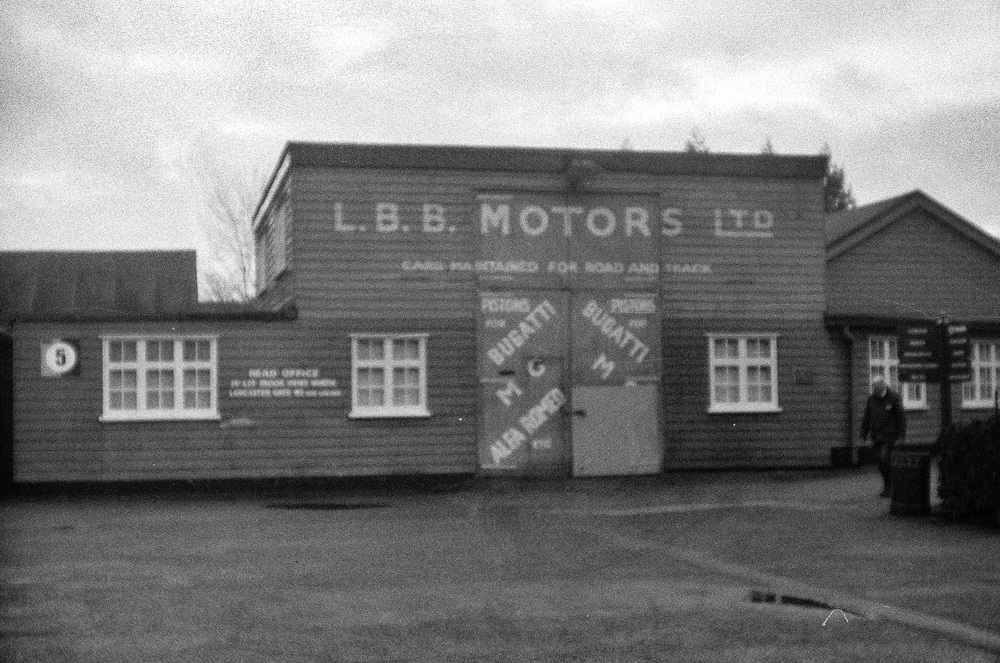
Viewfinder
Completing the array on the top plate of the Leica I is the film rewind knob which you need use only when a roll has been finished. Next to this knob is a handy viewfinder which allows you to see exactly what you are framing in your shot, although you do need to make some visual adjustments when focusing close to a subject. This integral finder is a great boon, although you can improve on it slightly by placing a larger viewfinder into the adjacent accessory shoe. These Germans think of everything.
Having wound on your film, set your aperture, decided on an exposure time, calculated the distance to the subject and framed the scene you are ready to go. Press the precise and beautifully resonanced shutter release and Barnack’s your uncle. I am astounded that miniature photography can be made so simple and with such a high degree of automation. In fact, it is very hard to see what possible fripperies Herr Barnack and his team could add to this camera to make it more usable. We have truly reached the pinnacle of miniature photography. It is a far cry from my Box Brownie which has given sterling service over several seasons on the beach at Blackpool.
As an instrument, the new Model I is a delight to hold. It fits the hand perfectly and throughout epitomises the new trend to more compact cameras. Many enthusiasts still prefer the old methods, cleaving to bellows and believing that a bigger film or a glass plate means better pictures. But for sheer convenience without losing the ability to make large prints by means of enlarging equipment, this Leica I takes some beating.
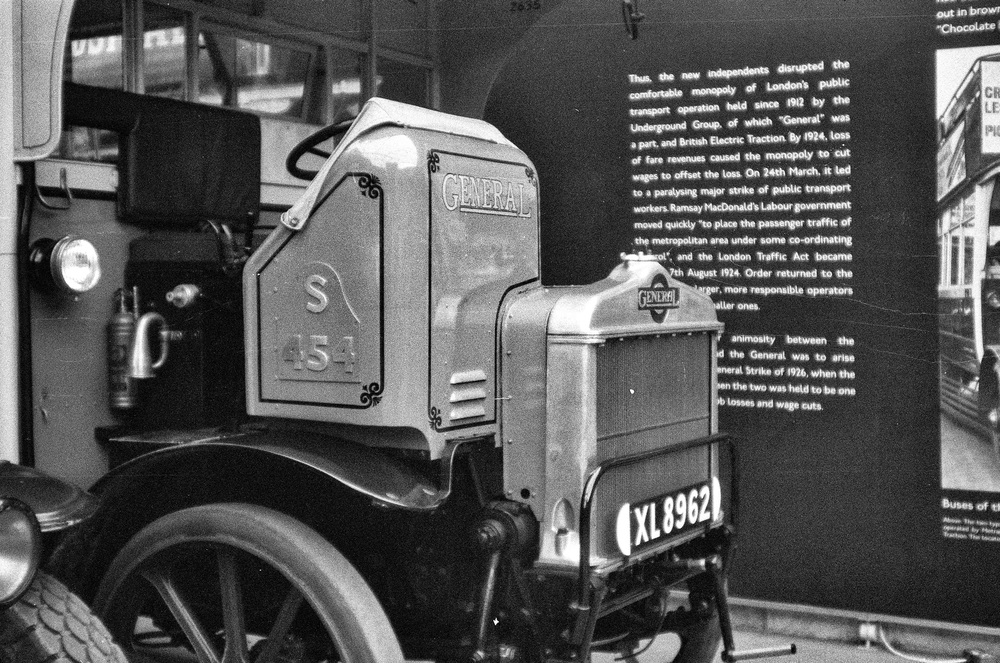
Film loading
The Leica with its unitary body and lightfast bottom plate offers the best and safest method of film loading ever developed. I know some photographers complain that loading film in the Leica is counter intuitive and difficult, but I soon mastered the technique. Some even suggest there should be a sort of door at the back of the camera to make film loading simpler. Believe me, this is totally unnecessary and would inevitably lead to light seepage and foggy negatives.
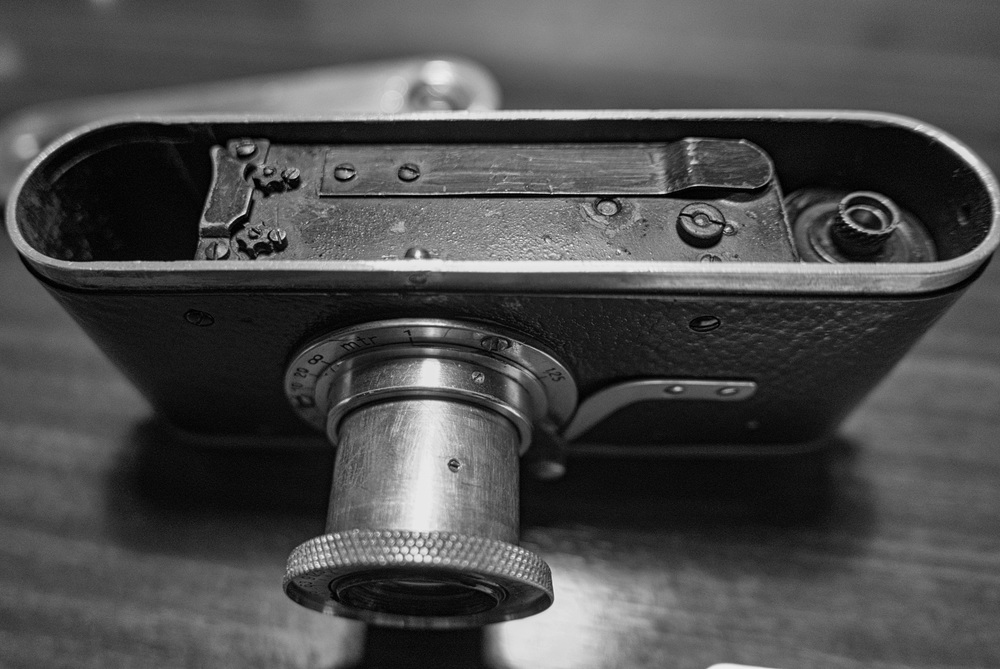
First, though, it is necessary to trim your film so that it has a half-width leader of about 4 inches. When you have wielded the scissors, pull out the receiving spool and thread the film into the spring clip.
Then grasp the film cassette and spool with both hands and introduce the trimmed length of film into the slot to the rear of the camera, pushing down cassette and spool at the same time. It is amazingly easy and I am sure I could change a film cassette in little more than ten minutes while out in the field. It helps, of course, to pre-trim your films before setting out for the day.
There really is only one disadvantage to owning a Leica and that is the £25 price. Leicas are exceedingly expensive cameras, thanks to the precision build and the thoughtful automation and attention to detail that every buyer expects. If you say it quickly, £25 doesn’t sound that much, but by camera standards it is an enormous sum affordable by only the most affluent miniature photographers. it is my dream one day to be able to afford one of these masterpieces.
My Kodak Box Brownie cost only three and sixpence in 1921 just to put things in perspective. The £25 cost of this Leica represents all of ten percent of my annual salary from The Miniature Photographist. I have no doubt, despite this, that your £25 is well invested because Leica cameras will hold their value better than most. Indeed, this is perhaps the only camera you will ever need and you will be able to pass it down to your children for another lifetime of faultless service.
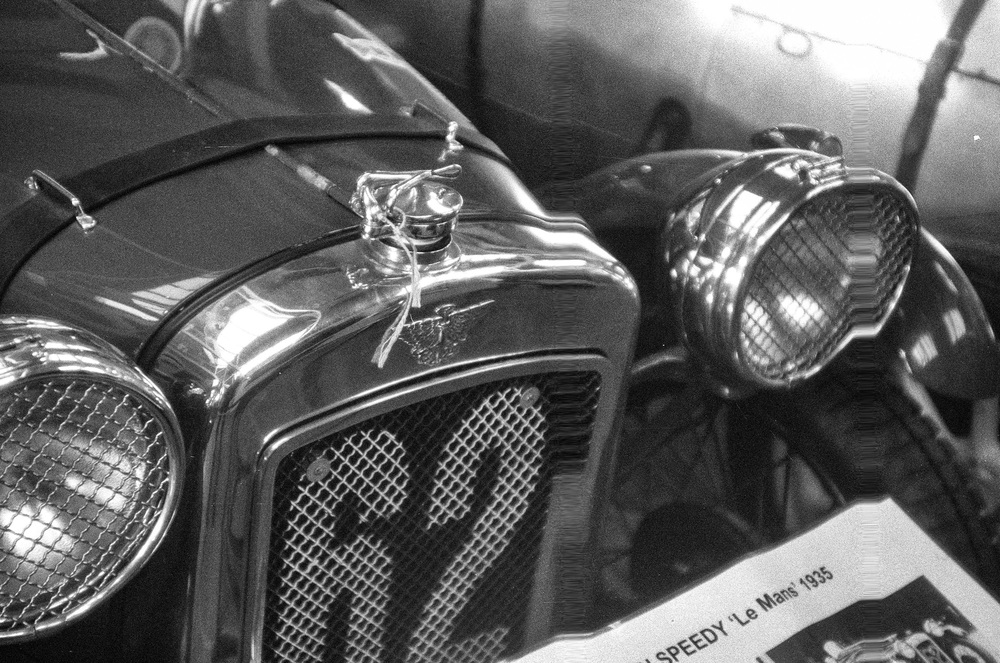
_________________________________________________________________________________
Fast forward 85 years
Jesting apart and ignoring 20:20 hindsight (which is invariably a wondrous thing), my description of the Leica I contains much truth. From the perspective of a keen “miniature” camera enthusiast in the late ‘20s or early ‘30s, the Leica I was indeed an advanced device. It was instantly ready for action, required no setting up and could grab shots in the most difficult of conditions. It was an ideal camera for adventurers; no fewer than 13 Leicas went on the Graf Zeppelin for the 1933 Arctic expedition, for instance.
My review camera, sadly, was not supplied to me by Oskar Barnack himself. Instead I bought it at the South London Camera Fair in Bexley a couple of weeks ago. Manufactured in 1929, it came from a noted collector of Leica I models, Malcolm Glanfield. Connoisseurs will notice immediate that this is a non-standard device. The original black finish has been factory converted to nickel and new-fangled strap lugs have been added. Other than that it is bog-standard, with simple viewfinder (no rangefinder) and a fixed f/3.5 50mm Elmar lens. The Leica LTM (thread or screw mount) came later.
While I don’t seriously intend to use the Model I on a regular basis, I did run an experimental film, just to check if everything is working and to see what state the lens is in. The outcome is pretty good, despite the attractive artefacts present in some frames, and the rest of the camera works well. Malcolm tells me he had a new curtain fitted.
If I intended to use it frequently I would invest in an adjust and lube but, frankly, the output from the first experimental film was encouraging and enough to give birth to this article. Despite the modern Ilford FP4, the results were decidedly period, with far more grain that I would expect from an ISO 125 film. My 1935 Leica III and later f/3.5 Elmar demonstrates what is possible in ideal circumstances and with perfect equipment, even from an 80-year-old device. This said, however, the Model I produces the sort of pictures most people would expect from an 85-year-old camera. They just look right.
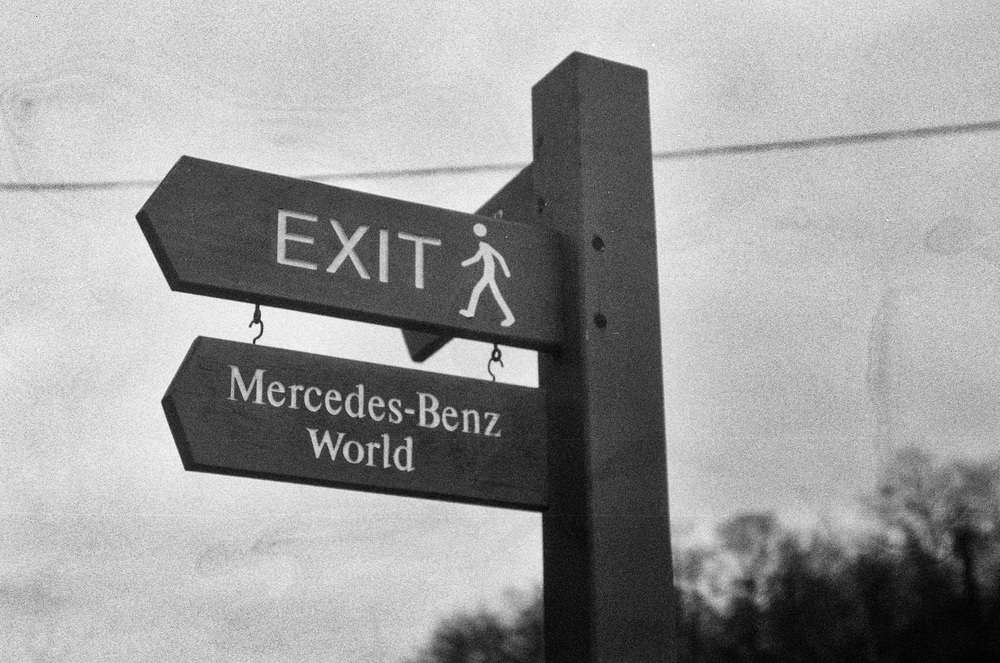
Rewind advice
After running a roll of FP4 through my 1935 Leica III (which has the untold luxury of a proper rangefinder), I returned a week later to Brooklands to reproduce some of these photographs with the Leica I. We will draw a veil over the first film which I ruined by opening the camera before I’d twiddled the rewind knob.
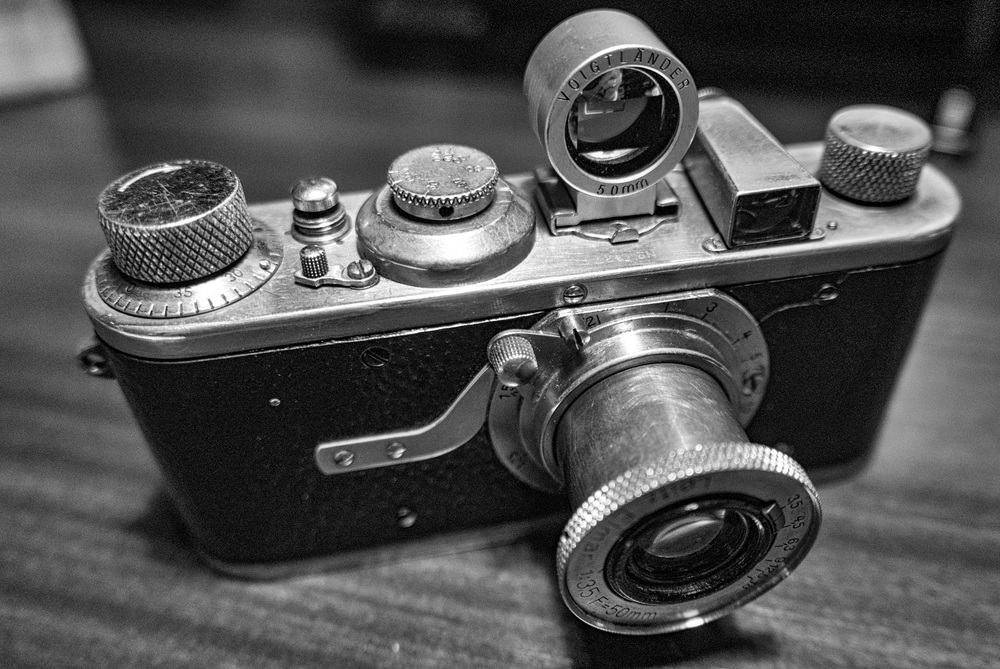
The Leica I is even smaller than the Leica III and feels absolutely perfect in the hands. Once you’ve faffed around with manual exposure and estimated the distance to subject (which isn’t all that difficult after the firsts few shots) the little Barnack is indeed addictive.
The shutter sound is sharp and precise and it is remarkably easy to keep the camera rock steady. The Galilean viewfinder is small to the modern eye and, after a few shots, I mounted an accessory Voigtländer 50mm OVF which made things so much easier.
During some of the earlier shots I was mirroring the scenes with a modern Leica MP, thus enabling me to check distances and crib exposure calculations. O me of little faith! On another outing, though, I would now have full confidence in using the old girl without any such aids. The range finding by guesstimate is remarkably intuitive and fairly forgiving if narrower apertures are used.
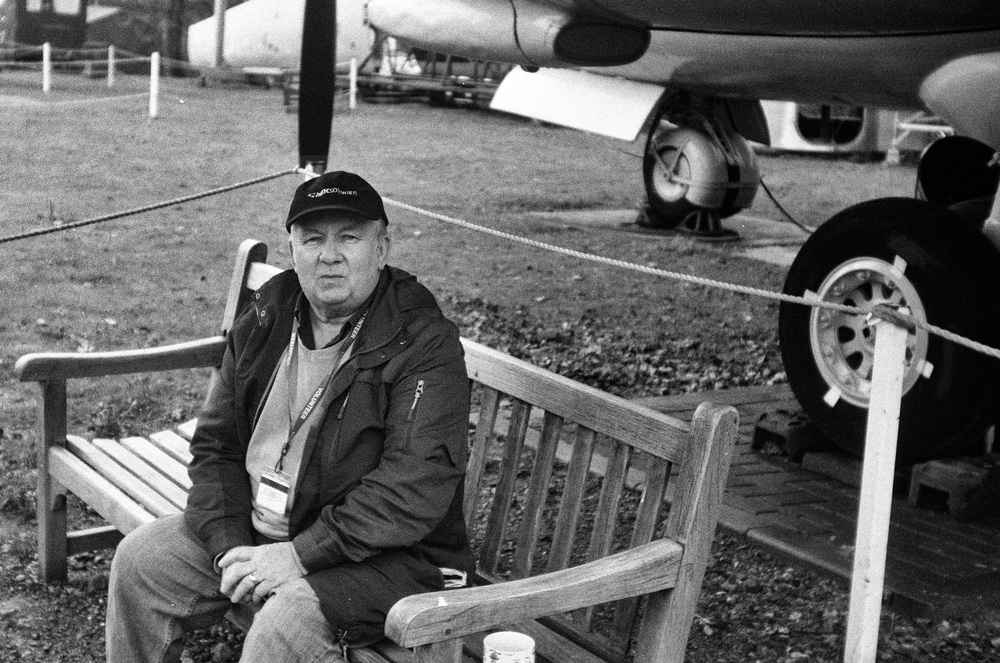
Advanced
Picking up the Leica I reminded me of how advanced it was in its day, all of 85 years ago. Here was a tiny camera that could fit in a pocket and could produce excellent results in often difficult conditions. It was the antithesis of the massive Victorian plate camera on its wooden tripod, with glass-plate negatives, requiring strict discipline on the part of both photographer and subject. What’s more, the Leica handled 36 shots without changing film, something that had not been possible before. Even now, with all its lack of automatic features, I can fully understand how advanced the Leica I must have seemed to the enthusiastic amateur photographer of the day.
The most most impressive thing about the whole experiment is that I was able to pick up this 85-year-old device (which probably hadn’t seen a film for all of fifty or sixty years), load in a roll of FP4 and go straight out to shoot. It was a classic example of learning on the hoof. The pictures won’t win any prizes but I was just happy to see this pioneering camera being productive and making a tolerable fist of it.
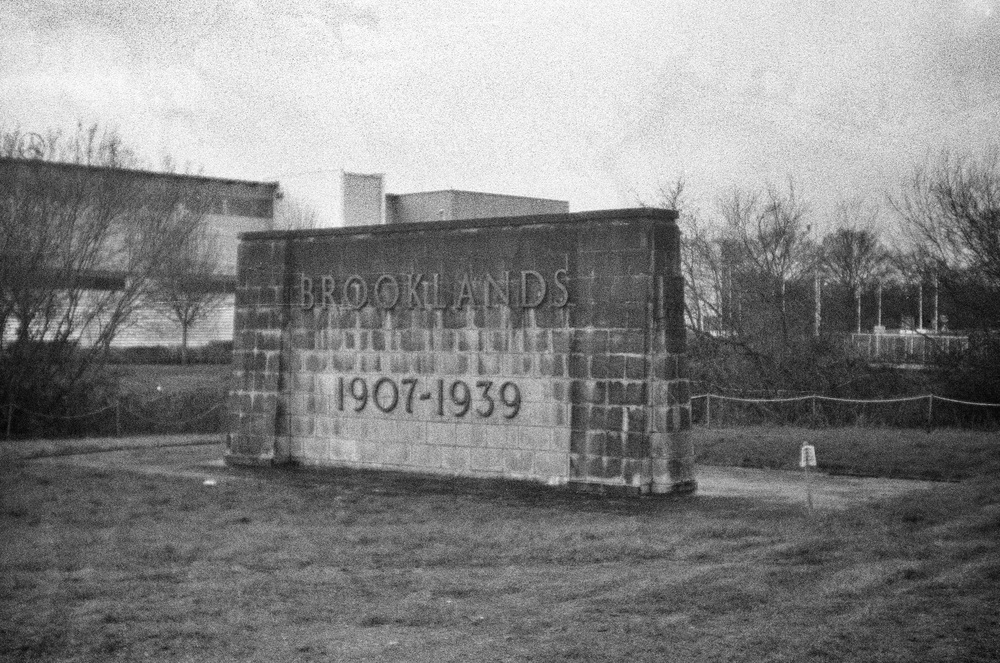
Back to basics
I suspect that if you really want to learn photography then a camera such as this takes you right back to the basics. You have to learn all the rules and, eventually, you gain an appreciation and understanding of exposure and full manual control of a camera. These days, with everything gone automatic, the joy has largely gone with it; it’s one of the reasons I like the Leica rangefinder above all because it forces me to think.
With two 1930s Leicas in my collection, I have to say that I prefer the 1935 III if only for its rangefinder which takes out one facet of the guestimation. It also has the advantage of using interchangeable lenses, although I’m pretty content with the 50mm Elmar. With the Model I you definitely feel like you are using a pioneering camera. The III from only five or six years later provides a similar experience to using a much later M3, M2 or M4. Only with the M5 and M6 did additional automation come in the form of exposure metering. I could happily rely on the III (or the later early-1950s IIIf which I also own) for all my film photography. Not so, I fear, with the Model I. This is down to condition and not any intrinsic better features of the III apart, possibly, from the rangefinder focus.
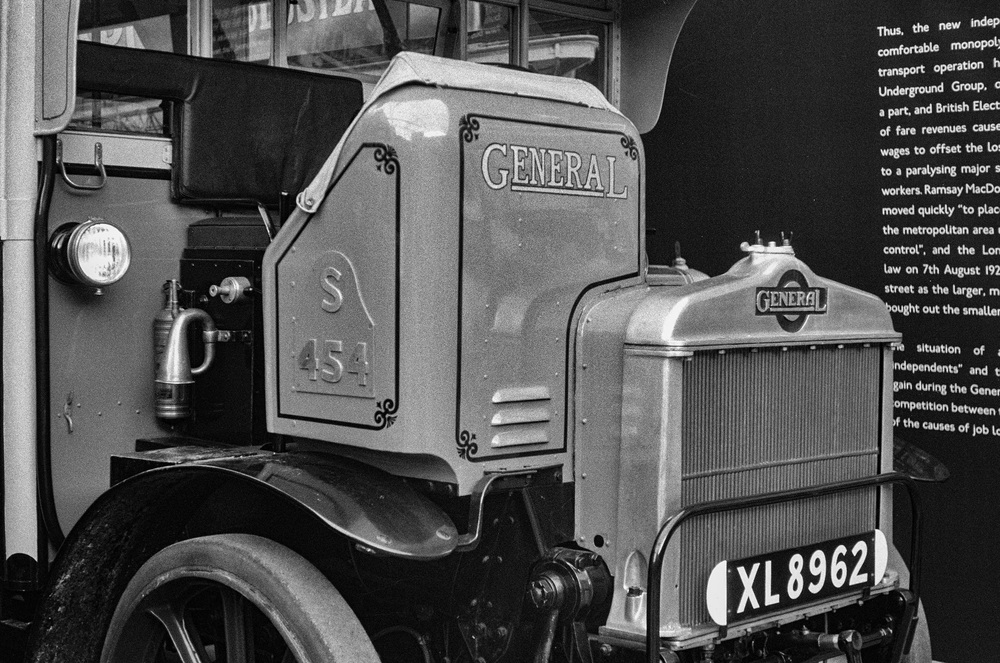
Leica I digital
Another interesting impression gained from using the Barnack Leica is just now similar it is to the much more modern Leica X1 or X2. The dimensions are almost identical and the feel is the same, although the original is 100g heavier than the digitals. So uncanny is the resemblance that I’m having a renewed love affair with the humble X1. Autofocus is slow, writing to disk is like watching paint dry, but as a user experience the X1 is a blast, with perfect results every time. The fact that it is a digital version of the old Leica I Model A is no bad thing.
See also….
Leica “The Ultimate Camera” lauded in advertising
1935 Leica III back on track after 80 years
Leica Cameras in the 1930s: A decade of progress
Leica III: A black GAS attack strikes after 80 years

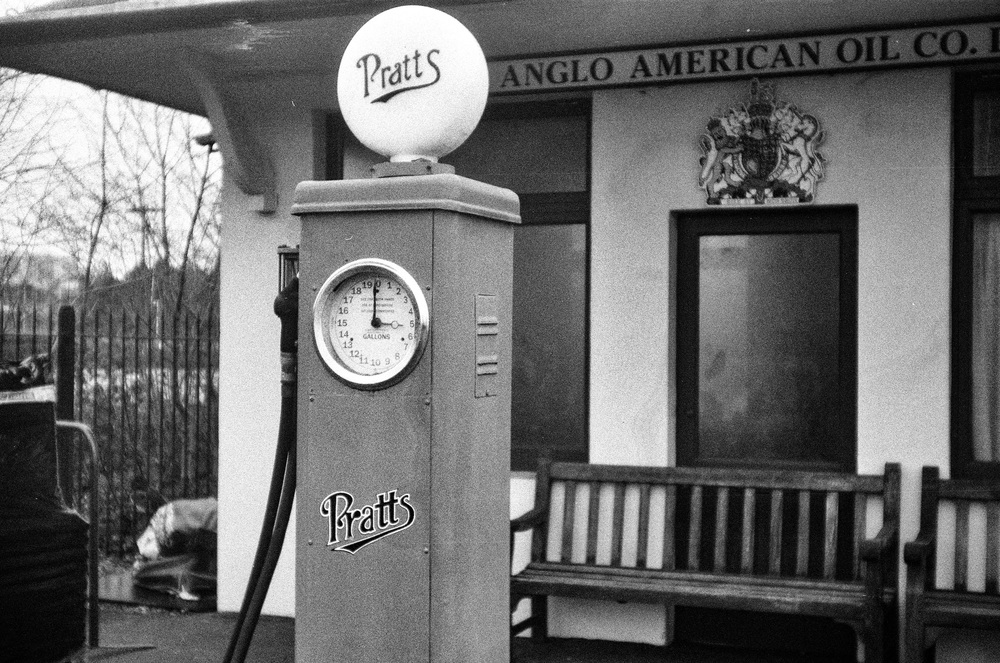
I had missed this article Mike – really wonderful, I love your original review angle. just great – thank you
Thankee kindly Jonathan, Sir. I’d forgotten all about this and I read it through with new eyes. I think I might consider republishing for a new generation of readers. Thank you!
I own a Leica 1 with serial number 3257 (1926). It looks still very good and it is working all right!! It has been converted by Leica to a Leica 1 model C with standard mount. So it has interchangeble lenses. Do you have any idea about the present value? I bought it some decades ago for $ 150 in Budapest in Hungary.
I can’t give you an estimate but I do know that conversions (which were done with the object of improving the camera) often fetch less than unconverted models on the current market. I will ask our resident expert, William Fagan to comment.
Mike
It is always difficult (indeed dangerous) to value a camera without seeing it ‘in the flesh’. The Leica Forum actually forbids valuation for that very reason. What I usually do is to provide links to the Collectiblend site which, if Mike allows as moderator, will give some idea as to value. This site averages the prices which have been obtained at auction for various camera models and must be read in that context.
The values for 4 digit I Model As are as follows:
https://collectiblend.com/Cameras/Leitz/Leica-I-Mod-A-(4-digits-Number).html
However, as your camera has been converted to a standardised I Model C the value is more likely to be closer to the following:
https://collectiblend.com/Cameras/Leitz/Leica-I-Mod-C-(upgraded).html
This is one of the features of Leica collecting. An ‘upgraded’ or ‘better’ camera will never be worth as much as one which is in original condition. This may be hard to understand , but this has been the case for a long time. It should be worth a lot more than the $150 you paid for it, however.
William
The links don’t seem to be working. Here they are again
https://collectiblend.com/Cameras/Leitz/Leica-I-Mod-A-(4-digits-Number).html
https://collectiblend.com/Cameras/Leitz/Leica-I-Mod-C-(upgraded).html
SORRY they are still not working….we suggest you go to the Collectiblend site and do a search.
On Collectiblend.com go into cameras then Leitz and the categories are Leica I Mod A (4 digits number) which show values as average $1400-$1500, very good as $1900- $2,000 and mint $3,400- 3600 and for a I Model C (upgraded) (from I Mod A) with lens average $600-$700, very good $800-$900 and mint $1500-$1600. It will be seen that the so-called ‘better’ or ‘upgraded’ camera is now worth much less than one in original condition. These figures must not be read as gospel as they are just averages of auction results. Also expecting a dealer to pay these prices will probably be an impossible task as the dealer will always be looking at his/her margin. Even at auction there will be a percentage to go to the auctioneer. The only way of finding out what is the actual value of a vintage camera is to sell it. I’m happy to answer any questions about this.
William
Michael, these are lovely photos with a true period feel. The difference with the III is largely down to condition and I would expect the I Model A to improve a lot after a clean, lubricate and adjust (CLA). The built in rangefinder will have aided focus but, apart from the L.B. B. Motors shot, you have done pretty well on the focus front with the I Model A. The artefact in the last shot on the roll would be eliminated by a CLA if it is due to a shutter issue. The CLA should also check for lens and focus issues. The Elmar must be matched to the camera and this can be done by opening the little hole on the back plate. What you have done here with good humour is to give context to the significance of the I Model at that time. As I pointed out in my 1930s article below, this was a period of great progress for the Leica camera with developments coming at a rapid pace. This was true of other fields such as transport (motoring and aviation) and communications (radio, television, as pointed out in your article below, and telephony) and in the arts (‘modern art’ and in popular music the mixing of European and African elements from jazz and blues). The Leica camera was part of the development of the miniature camera for the home and, while it was too expensive for the average household budget, its influence was everywhere.
William
Thank you William. I set out on this little quest knowing practically nothing about the Leica I Model A and, thanks to your advice and encouragement, l learned a lot in a short time (six days to be precise). I don’t think anyone should be afraid of buying and using a 1930s camera and I believe it could well be the best way of learning the basics You will never learn by leaving your digital camera on auto. Beyond all this, these cameras are beautiful objects and and an honour to own, such is their provenance. They make an ideal collector’s objective, supported by a wealth of information and a host of dedicated fans. They will also keep their value.